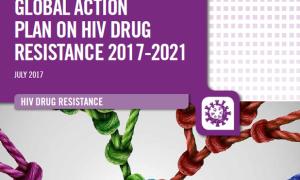WHO launches first Global Action Plan against HIV drug resistance

IrsiCaixa researcher Roger Paredes is a member of the WHO HIV Drug Resistance Steering Group, which has developed the strategic lines of this plan
It is estimated that by the end of 2016, nearly 37 million people were living with HIV, of whom 19.5 million were taking life-saving antiretroviral therapy (ART). Drugs control the infection if there is a good adherence to treatment, but otherwise virus can develop resistance so they become no longer effective. Resistances can also be transmitted, so it is possible to be infected by a resistant virus. According to a WHO report, some low- and middle-income countries have more than 10% of new infections caused by a resistant virus. This rate is even higher in people who have previously been exposed to antiretroviral drugs, such as pregnant women who take treatment to prevent transmission of HIV to their children. If the situation does not change, it is estimated that in 2016-2020 HIV resistance could cause 105,000 new infections, 135,000 AIDS deaths and an additional cost of $650 million in drugs in sub-Saharan Africa.
Faced with this situation, WHO began to develop a Global Action Plan (GAP) on HIV Drug Resistance. The GAP, launched on July 23 in Paris, has been developed through a large consultation process over 18 months, including inputs from 800 people, 350 organizations and over 100 countries. By establishing the global reference about HIV treatments, the GAP will have a huge impact worldwide. IrsiCaixa researcher Roger Paredes is a member of the WHO HIV Drug Resistance Steering Group, who has developed the strategic lines of this plan.
The 2017 WHO HIV Drug Resistance report shows that in 6 of the 11 countries surveyed in Africa, Asia and Latin America (Argentina, Guatemala, Namibia, Nicaragua, Uganda and Zimbabwe), over 10% of people starting antiretroviral therapy had a strain of HIV that was resistant to some of the most widely used HIV medicines. In 2 of them, Nicaragua and Uganda, this rate was above 15%. This growing threat could undermine global progress in treating and preventing HIV infection. To avoid that, WHO recommends those countries to urgently review their HIV treatment programmes and administer dolutegravir, a drug from the newest antiretroviral family and one of the most used currently in high-income countries. This is possible thanks to reductions in the price of this drug, making it affordable for low-income countries.
"It's not just a cost-effective measure, it will save lives. If a resistant virus infects someone, the first-lines drugs will not work. This will be harmful to him and will also facilitate the development of resistance to other drugs that will be transmitted to other people who will be in the same situation," explains Paredes.
Affordable technology
In the future, it will also be essential to develop affordable technology to determine whether someone is infected with a resistant virus. "Current technology is expensive, but the GAP will encourage the development of cheaper methods," Paredes said. "Even so it is more expensive to give a non-effective drug to a patient because he will develop diseases, he won’t be able to work, he will orphan children, it will involve additional costs to the national health system...", adds Paredes.